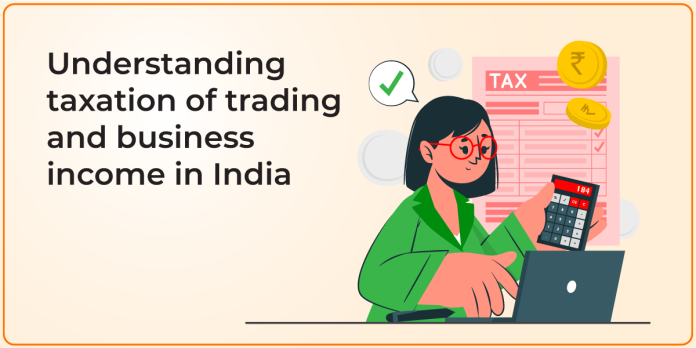Taxation of income arising from trading activities, whether speculative or non-speculative, isn’t as straightforward as the taxation of capital gains. Unlike capital gains, business income is subject to variable tax rates based on an individual’s total income. This involves combining various sources of income like salary, other business earnings, interest from banks, rental income, and more, then computing taxes as per the applicable tax slabs for the Financial Year.
Calculating Tax Liability
In calculating the total income, which includes both salary and business earnings, there is a salary income of Rs 1,000,000 with profits derived from F&O trading amounting to Rs 100,000, as well as Rs 1,00,000 from Intraday equity trading. The cumulative total comes to Rs 12,00,000.
Read: Intraday Trading – Mastering the Art of Timing for Maximum Profits
For this total income, an individual is liable to pay taxes based on the progressive tax slabs as follows:
| Income Slab | Tax rate | Tax Amount Rs |
| 0 to 2.5 Lakh | 0% | 0 |
| 2.5 Lakh to 5 Lakh | 5% | 12,500 |
| 5 Lakh to 10 Lakh | 20% | 1,00,000 |
| 10 Lakh above | 30% | 60,000 |
| Total Tax Amount | 1,72,500 | |
Therefore, the total tax amounts to Rs. 1,72,500 after summing up Rs. 12,500 plus Rs. 1,00,000 plus Rs. 60,000. Additionally, Individuals have earned Rs. 1,00,000 classified as short-term capital gains from delivery-based equity, which incurs a flat 15% tax rate. Hence, the tax liability on this short-term capital gain amounts to Rs. 15,000. Consequently, the total tax obligation becomes Rs. 1,87,500 after combining the income tax of Rs. 1,72,500 with the short-term capital gains tax of Rs. 15,000. I hope this example provides a fundamental understanding of how to categorize income and calculate one’s tax liability.
Carry Forward Business Losses
Speculative losses carry forward for 4 years, set off only against speculative gains. Non-speculative losses offset other business income in the same year, like interest, rental, or capital gains. Carrying forward non-speculative losses is allowed for 8 years, set off only against non-speculative gains during that period.
For instance, suppose an individual has a business income of Rs. 15,00,000 and interest earnings of Rs. 2,00,000, totaling Rs. 1,700,000. In this scenario, having a non-speculative business loss of Rs. 7,00,000 allows us to offset it against the business gains, effectively reducing the tax liability. Tax calculated on Rs. 10,00,000 using applicable tax slabs would result in a Tax Liability of Rs. 1,12,500.
Speculative losses (such as Intraday equity) cannot be used to offset non-speculative gains (like F&O); however, speculative gains can offset non-speculative losses.
Tax-Loss Harvesting and Advance Tax
You might have profits and unrealised losses towards the fiscal year’s end. If left unaddressed, taxes apply to realised profits while carrying forward unrealised losses to the next year. This results in higher immediate tax outflow, leading to lost interest on that capital due to taxes. You can defer this tax payment by realising the unrealised loss and reinvesting immediately. This action reduces the tax liability for the fiscal year.
Balance Sheet is a Must
When trading is declared as business income, it necessitates the creation of balance sheets and profit/loss statements for the financial year. Audit requirements may apply based on turnover and profitability.
Read: How to Read Annual Report of Any Company?
Conclusion
In conclusion, understanding the taxation of trading/business income in India involves greater attention to various sources of income, tax slab rates, loss offsetting rules, advance tax payments, and the preparation of financial statements.
For detailed guidance and accurate tax planning, you should consult a certified tax professional. Understanding these aspects can help individuals manage their tax liabilities effectively while navigating the complexities of business income taxation in India.


